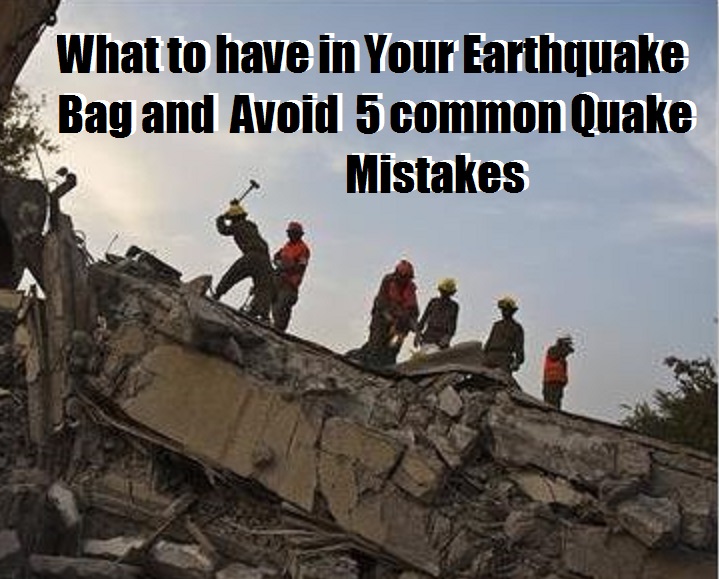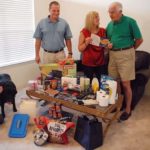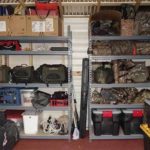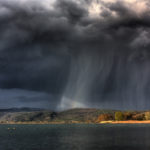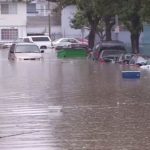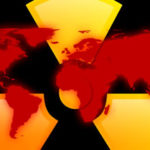Some posts may contain affiliate links.
What to Have in Your Earthquake Bag and How to Avoid Common Quake Mistakes
Experts having been warning us for several years now that the west coast of the United States is well overdue a major earthquake. I currently do reside on the west coast and do have concerns.
The last quake of any merit we had here was very scary. Cupboard doors blew open and their contents literally flew about the house. Shelves twisted off the walls while some of the contents remained in place (thanks to museum gel) on the mangled shelves! Windows broke sending glass flying everywhere and large pieces of furniture toppled.
During that particular quake I was lucky in so many ways! 1st it was a mild quake and my home was almost 10 miles from the epicenter. Had we been closer to the epicenter or had a larger quake the home could have been destroyed and more people in our neighborhood including myself more seriously hurt. I also happened to be home and alone that day. The rest of the family away at the time. This kept them from harm and gave me time to clean up the mess, turn off the gas lines, and the water flow to the home and bandage my own face where I had been hit with flying glass prior to their return.
It is unlikely I will be so fortunate a second time. We are more likely to be in schools, at work places, in our vehicles, in stores, and other public places.
So setting up a portable earthquake bag is an excellent idea. It should be a get home bag which addresses earthquakes in particular if you live in a region prone to them. Check out Graywolf a former military man recommends for your portable earthquake bag at the link below.
How to build an earthquake survival kit
Once you have your earthquake bag together keep it within reach of where you might be when an earthquake might hit. I actually had a couple of the small ones…. one I kept under my desk at the office, one in my vehicle and one in the home.
Now that you have your safety bag, there are some tips you should take into account during an earthquake which could save you.
- If you are driving along the road when a quake hits. Do pull over and stop the car. Engage the emergency brake. But do not leave the vehicle. You are actually safer in the vehicle than under it.
- Duck and cover do not head for the nearest door way. It used to be that the doorways were built sturdier than the rest of the wall. That is no longer true and in your attempt to get to the door way you could be hit with debris and unable to locate appropriate cover in time.
- The most dangerous place to be is just inside or just outside abuilding as it crumbles. So if inside duck and cover under a sturdy item and stay put. If outdoors stay outside and move away from the building.
- If you have a pet do not try to hang on to him or her. They will be frightened and acting instinctively. Let them go, their instinct more often than not will guide them to safety.
- If you are in bed when the world begins to shake, and if you don’t have a large heavy fixture over the bed your are indeed safer pulling those blankets over your head and staying put.. The blankets help protect you from being cut by debris and the bed has some give which can cushion anything that falls
- Ignore the triangle of cover theory. The ‘triangle of life’ theory has gained some popularity as a safe method of survival during an earthquake. The theory implies that when large objects collapse, voids are created next to them, usually forming the shape of a triangle. So, according to this theory, you should run for cover next to a large object, not under it. However, other studies show that it is virtually impossible to know beforehand where such gaps will occur and being on the wrong side of the item could be deadly.
- Don’t run for the inside if you are outside and vice versa as it places you on the edges of the building which is the most dangerous as noted above.
- If you have glass or painted shelves use museum gel to secure breakable items to the shelf. (stained shelves tend to become discolored where the gel is placed)
- The safest method is still duck and cover as close to your earthquake bag as you can.
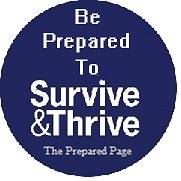 This is an aggregated site. Please be aware some of the sites we link to could have pop ups. We have no control over them. However, we will never link you to a site that requires you to make any purchase to view the blog.
This is an aggregated site. Please be aware some of the sites we link to could have pop ups. We have no control over them. However, we will never link you to a site that requires you to make any purchase to view the blog.
Please read our disclaimer. We provide you with information from various sites all over the world. The author’s expressed opinion isn’t necessarily that of The Prepared Page or its staff. Our intent is to bring you the information. Use your and your own best judgment when using any information contained within the blogs.
While you’re here check out some of the other posts you may find them interesting!!!
Some posts may contain affiliate links.

